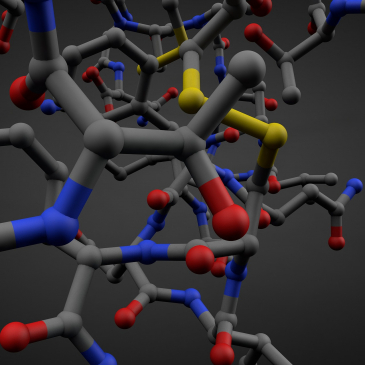From paper straws and cotton bags to paper composite drinks cartons and glass bottles, environmental concerns have driven several changes in the food and packaging industry, in recent years. Many of these shifts have emerged as a knee-jerk reaction to consumer anti-plastic sentiment, but these abrupt alterations are not as environmentally-sound as they might first appear. Here, Dr Ashlee Jahnke, Research Director of biodegradable bioplastics developer Teysha Technologies, has explained why polymer research holds the key.
“There’s a lot of pressure to move to alternatives [to plastics], which aren’t necessarily better from an environmental and climate impact point of view,” said a supermarket representative interviewed in the recent ‘Plastic Promises’ report, published by Green Alliance in January 2020.
Although spoken from a retail perspective, the comment summarises the challenge faced by packaging businesses around the world. The wider report also draws attention to the issues that surround substituting plastics, especially when there is consumer demand to accelerate the transition.
It goes without saying that planning, production design, packaging or manufacturing involving plastics should involve due consideration of their environmental impact, with engineering and scientific rigor. However, environmental decisions spurred on by public pressure — be they knee-jerk or well-meaning — have frequently led to sudden changes being made without sufficient consideration of their consequences or ramifications.
For example, many beverage brands have used conventional plastics in their processes for many years. As awareness of the plastic pollution problem increases, these processes have been adapted to use more bio-based polymers such as polyethylene terephthalate (PET), which is recyclable but still majorly derived from petrochemical sources. Some manufacturers have moved further from plastics and adopted glass bottle packaging, which presents the first of several complications that arise when replacing plastics. Specifically, the carbon footprint.
The carbon footprint of packaging will vary depending on the manufacturing process, material, source and supply chain. As noted in a review published by the South African Journal of Industrial Engineering in 2016, the typical global warming potential (GWP) of producing one 500 ml PET bottle was approximately 2,858 grams of carbon dioxide emissions per hectolitre (gCO2e/hl). For 300 ml glass bottles, it was significantly higher at 22,249 gCO2e/hl. This would be only 14.2 g of CO2 emissions per 500 ml PET bottle, compared with 66.7 g per 300 ml glass bottle.
Of course, that is just one review and further studies may vary. However, the findings do highlight the importance of considering environmental implications of carbon footprint when selecting plastic substitutes. Similarly, choosing alternatives requires careful consideration of the available recycling infrastructure.
When the fast food retailer McDonald’s launched its paper straws, it later admitted that there may be challenges in recycling them, whereas the previous plastic ones had been readily recyclable. Likewise, for several years, many areas of the UK faced significant challenges in recycling Tetra Pak composite cartons. Although these cartons were sold as being environmentally-friendly, issues arose due to aluminium foil liners and polyethylene caps on the packaging.
Today, similar challenges are encountered by drink manufacturers that are swapping plastic bottles for composite cartons with coated interiors. This is commonly done by many supermarket-owned brands, in recent years, in an effort to cut back on plastics. Most brands assume these can be recycled, but that often depends on the available recycling infrastructure that is a pressing issue in many countries.
This is all without considering the consumer convenience aspect. Although many consumers are well-intentioned, plastic packaging and single-use applications rose to prevalence because they are convenient. A fragile, glass bottle does not offer the same levels of versatility, or convenience, as plastic. It also presents a direct and immediate health risk if disposed of improperly — after all, approximately, only 45% of waste is recycled in the UK.
So, what’s the solution? Unsurprisingly, it’s not a simple question to answer. Many nuances must be considered in plastic substitutes, from their recyclability and global warming potential (GWP) to their versatility and suitability for applications. What we can say with some confidence, however, is that research into polymers is invaluable.
For example, at Teysha Technologies, we have spent years extensively researching biodegradable biopolymers. These polymers are derived from entirely natural feedstocks and, crucially, can degrade in natural environments within a relatively short period of time. One solution that we‘ve developed helps to overcome the challenges of versatility, which are traditionally faced by biodegradable and bio-based polymers.
This solution is a plug-and-play platform of sorts, where modified natural-product monomers and various co-monomers can be utilised. Additives can also be used to modify the properties of the polymer that’s being produced, which allows materials scientists to form materials that vary greatly in their thermal, mechanical and degradability properties.
In effect, these biodegradable biopolymers could be the ideal candidates to replace conventional plastics derived from petrochemical feedstocks. These polymers could be used without any sacrifice to the performance of a material in a given application, and without swapping to more carbon-intensive or non-recyclable alternatives.
One challenge that can’t be avoided is that these changes take time. However, if we can learn anything from the sudden plastic substitutions of recent years, it’s that transitioning to packaging materials that are truly more environmentally-friendly must be a process, rather than a leap. With true investment, in terms of engineering and materials science, there is no reason why environmental concernscannot be tackled head-on by developments in polymer technologies.



